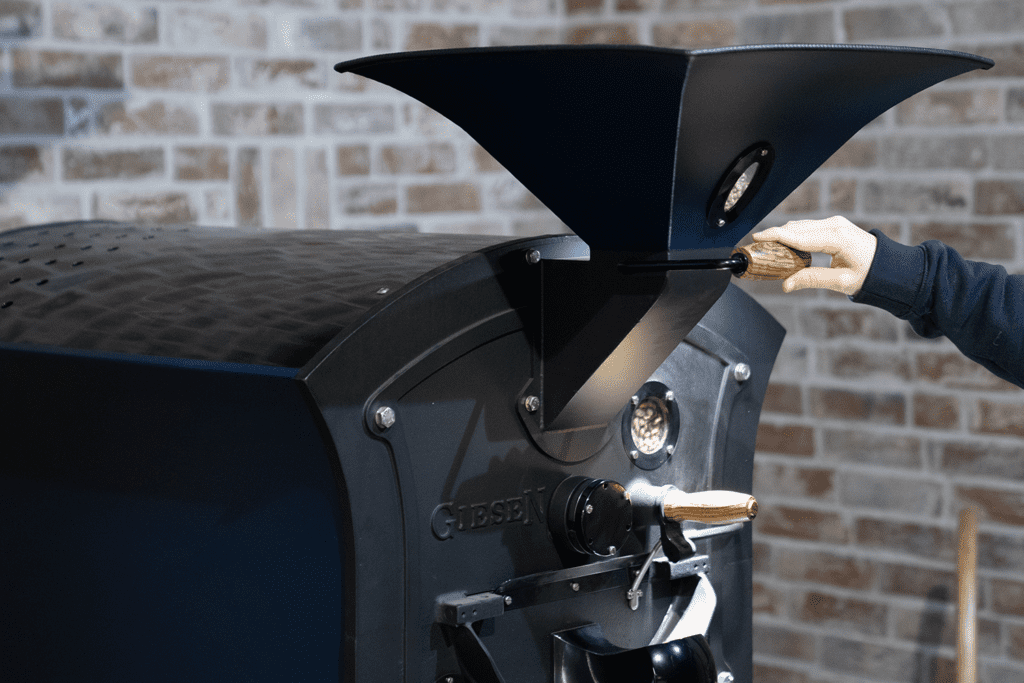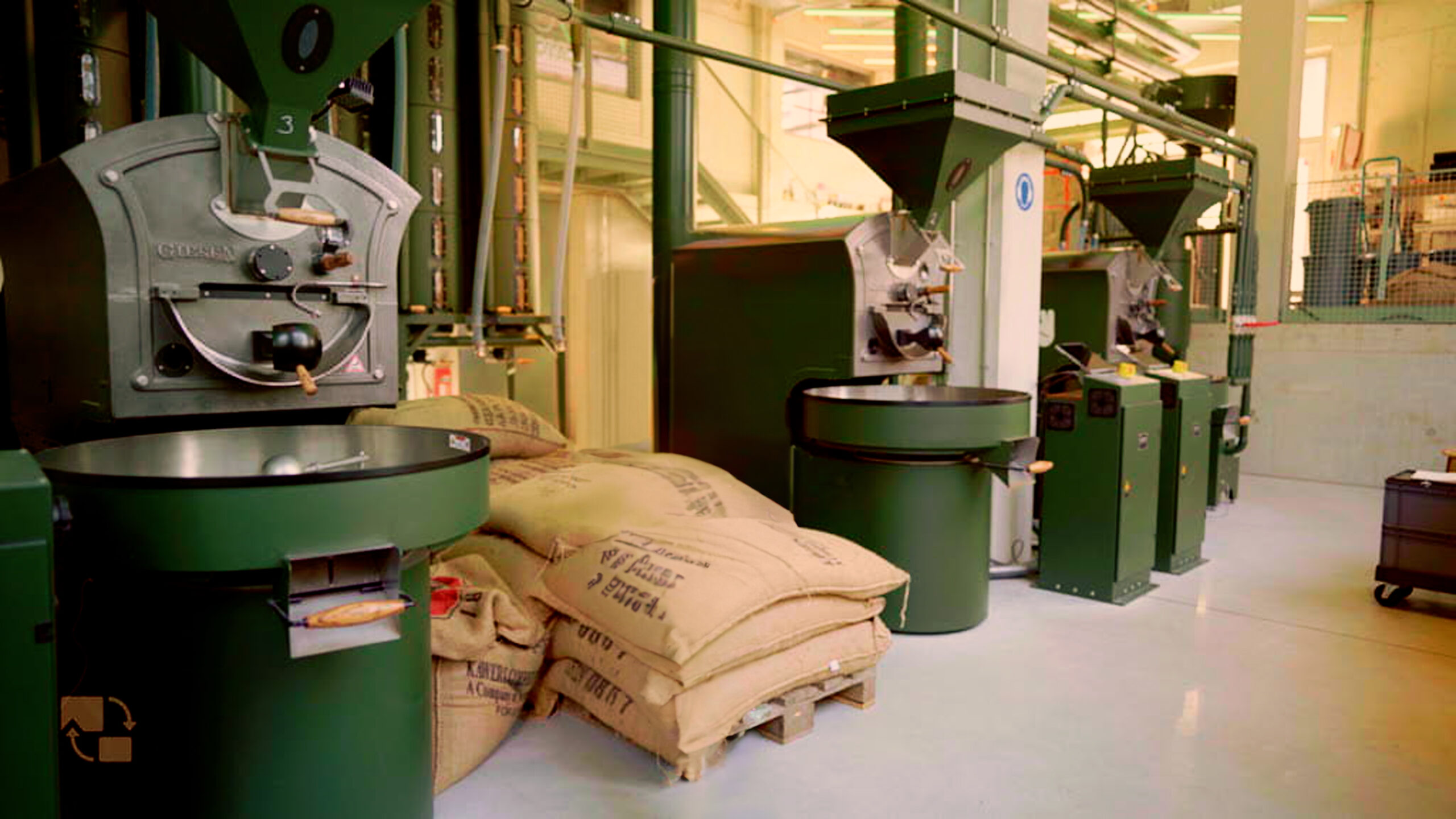Last webinar #17 focused on how to successfully roast dark. Willem talked about the legacy of Alfred Peet, dark roast profiles, structural changes with roasting dark and more. We wrote a summary of it.
Topics of webinar 17:
- The legacy of Alfred Peet
- Roasting dark: Green bean to the first crack
- Coffee roasting defects
- Creating roasting profiles
- The flavor notes
- Structural changes with roasting dark
- Acidity with roasting dark
- Roasting profiles for darker roasts
The legacy of Alfred Peet
The proliferation of specialty coffee of course starts with the legacy of Alfred Peet. A person intricately connected with specialty coffee here in the USA. Simply because he was a true pioneer back in the 1960s. He was a Dutch American entrepreneur and the founder of ‘Peets Coffee’ in Berkley California. He has also been called the dutchman who thought America how to drink coffee.
In his lifetime he owned 3 Peets stores. When he sold his business, he became a very influential coffee guru/ coffee teacher. Peet was kind of a controversial guy. The Dutch style of always speaking the truth doesn’t always work out that well. Alfred Peet was very much a Dutch person also in that sense that he had very strict ideas and his philosophy became based on three elements. Buying the best quality green beans that he could afford. And secondly, pursuing these beans from the highest elevated areas. And finally, roasting those coffees with roasting profiles that were way darker than what the world had ever seen before.
When I came to the US in the 1990s I had the pleasure to meet Alfred Peet.
Roasting dark: Green bean to the first crack
Let’s review some of the steps that we need to follow when roasting coffees towards a darker roasting style. First of course when we are roasting dark, we need to do our normal due diligence from the green bean to the first crack as we would normally do this. I would say when you’re performing a dark roast, you will still want to be very diligent in following the milestones you would follow if you did a light roast. This is important because in roasting we have these three prolific stages, although I would say four prolific stages:
- The drying cycle
- The Maillard reaction
- The caramelization reactions
- The development stage
At the beginning of the caramelization phase, you want to achieve an even development of the coffee bean throughout. This is important because in darker roasts you don’t want to make the mistake of overheating the internal cellular structure of the beans because that can lead to internal scorching which can be a big problem. In a dark roast, of course, it is as important to follow these stages as you would do in any normal roast. But in general, with a darker roast profile, you want to build up more momentum. And that momentum can be built up the best by applying sufficient heat.
When we go from the first phase leading up to the first crack, we must look at how we are going to strategize towards the second crack. It’s important when you’re calibrating your process to do this, that the changes of the beans can be observed. Specifically, when you’re setting your time-temperature profiles you will want to make this inspection possible.
Gradually when you are going from the first towards the second crack, you can see changes. A consequence of the darker roast profiles is that oils will very gradually start to escape from the bean. Then it can really be up to not only your choices but also the responsibility you take to do honor to the flavor profile of this coffee. And this is an important aspect. Certain coffees can withstand these darker roasting profiles better than others.

Creating roasting profiles
When it comes to creating roasting profiles, I would like to observe some ground rules. We of course want to make our calculations of the development time also as a percentage. The development as a percentage is the actual time from the very start of the first crack to the end of the roast in relation to the overall duration of the roast. It’s logic that in the case of a darker roast, that the development as a percentage is more prolonged. We could say on the low-end 20 percent and on the highest possible 28 percent, which I think is the absolute limit. If you take a roast darker than that with more development, you’re really burning off the fibers of the coffee.
The flavor notes
When we are looking at the flavor wheel for the darker roasts, we’re more referring to roast notes that are in the roasted category, in the spices category. As well as in the nutty and cacao category and the sugary flavor notes. So how do you prevent flavor tones that are ashy or smokey? Then again it’s very essential to maintain good control of your development and to set a maximum window of the development of the coffee during the roasting process.
Structural changes
We see structural changes as a result of roasting darker:
- Mass is lost (13%-22%)
- Volume increases (30%-100%)
- Brittleness
- First decreases to allow expansion, then increases with roasting temperature
- Density is influenced by roast time and temperature
- Changes from green (500-700 g/L) to roasted (350-450 g/L)
- Most drastic changes in fast and darkly roasted coffee
From a perspective of efficiency, roasting dark is not the best choice you can make because you’re literally roasting off, losing more than 20 percent of the weight of your green beans.
Acidity
Now, let’s look at the citric and malic acidity when it comes down to roasting dark. Citric is correlated with citrus fruits, oranges, lemons, and limes. They will break down during roasting. The trick is however to maintain still to support some of the remaining acidity in the cup and that’s specifically when we are looking at the malic acidity. Preventing the overall loss of malic acidity which is usually the acidity that I sense on the side of my tongue. It’s important to try to maintain those. At the same time, we can realize that lactic, acetic, and quinic change and/or increase during the roasting.
Like to see some examples of roasting profiles for darker roasts? Check out the webinar.
Check out the other Giesen blog articles and webinar summaries here.





This Post Has 3 Comments
Hi, I was glad to find this article as there is very little on roasting dark out there.
I tried a darker roast with the purpose of achieving less acidic, smoother espresso drink, but instead of what I expected it tasted burnt. I mostly roast my speciality coffees between 20 and 22 percent after crack development for my light to medium roasts, so I was surprised to see 20 percent even mentioned. Is the key then to have a slower roast than I would usually aim for? I tried to achieve a higher momentum to the roast so I may have done the opposite of what I should have. I usually get fc at around 7:45 to 8:15 and overall roast time acc to dev of 20 to 22. Any input would be appreciated.
Hi Pieter, thank you for your comment, and good to hear that you dive into the world of roasting darker coffee. Have you had the chance to check out the Willem Boot: Behind the Roast videos? There we dive deeper into the process of roasting coffee on Giesen machines. Find the videos and articles here: http://www.giesen.com/behind-the-roast